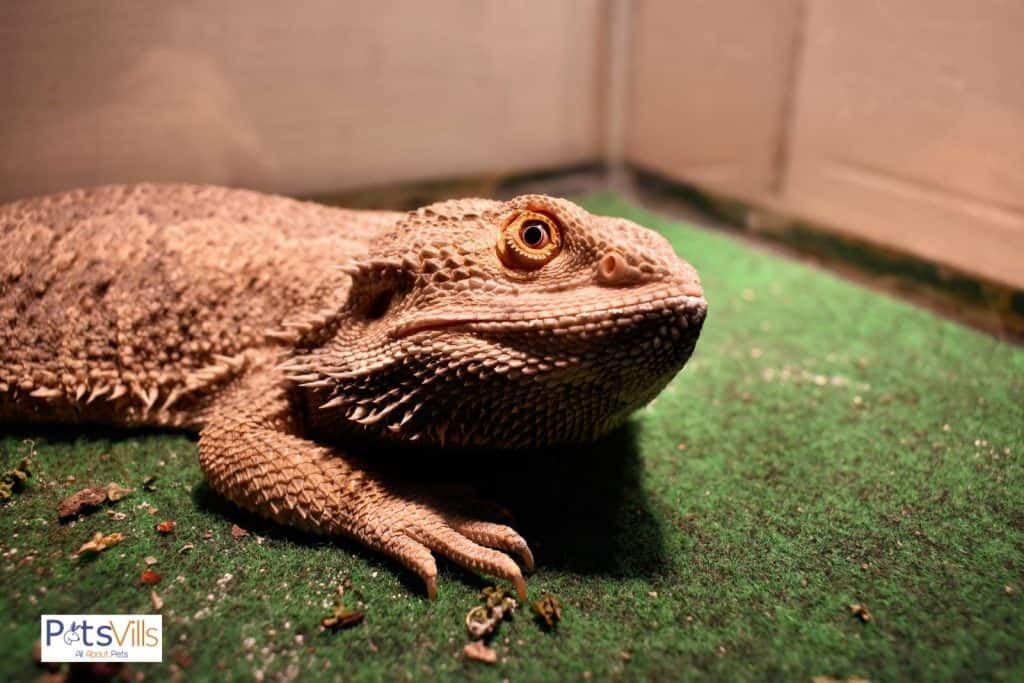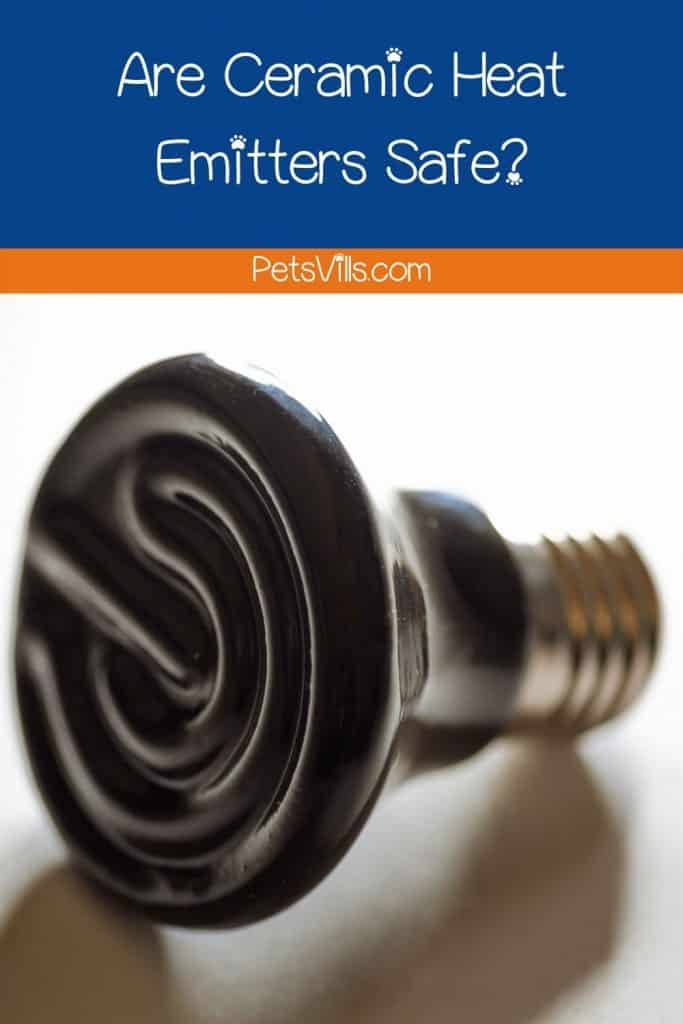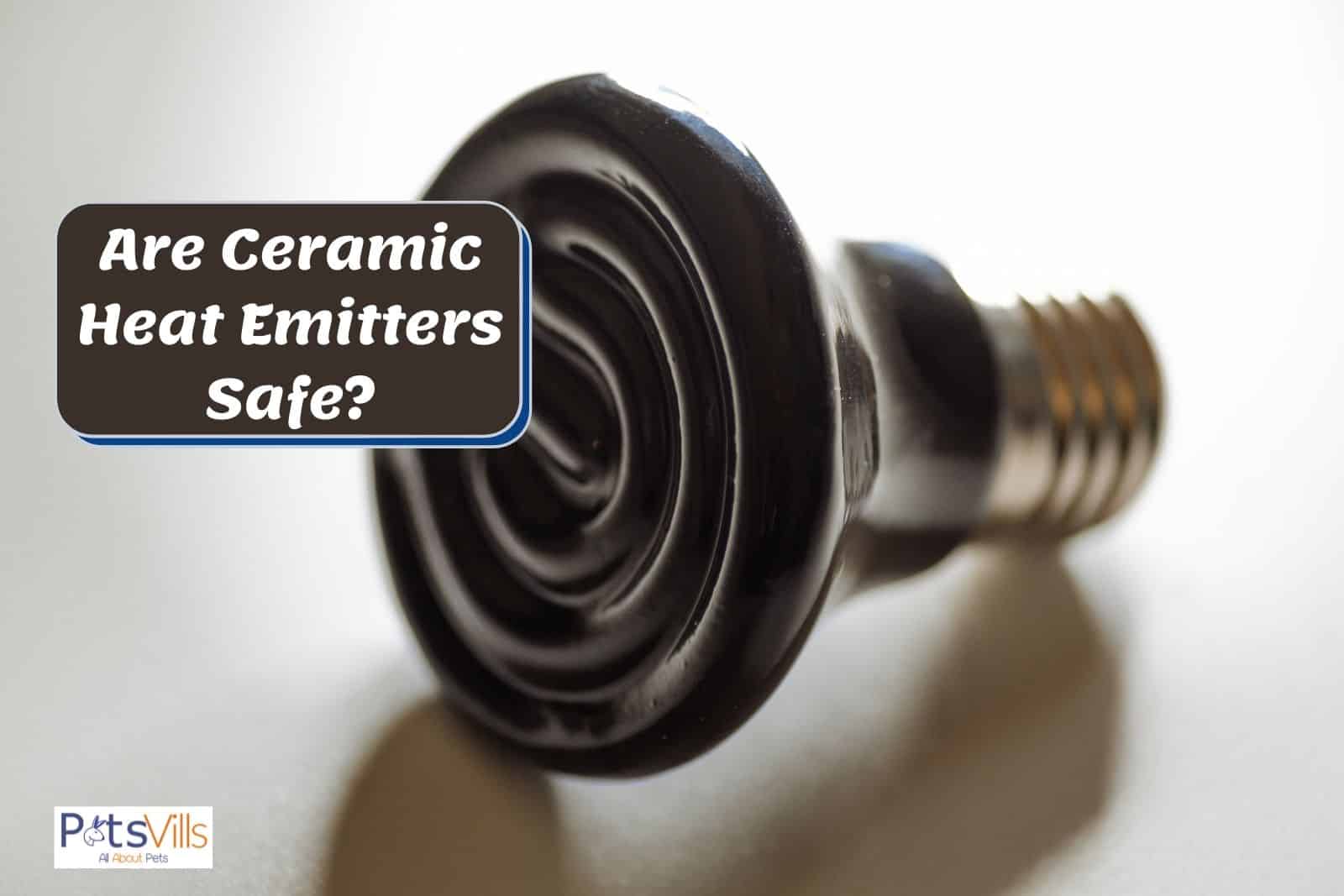Are ceramic heat emitters safe?
Many new bearded dragon owners want to know the truth about it –
Would there be no problems in using it to get the temperature needed by your beardie?
In this guide, I’ll be discussing with you all the knowledge I’ve gained in my decades of owning a bearded dragon!
I’ll present you with some tips on using these heating devices safely.
Table of Contents
Are Ceramic Heat Emitters Safe?
Yes, ceramic heat emitters are perfectly safe not just for your pet reptile but also for the environment where it is, too.
It’s so safe that you can use it for all different types of reptiles –even if you have an active lizard or a ball python in captivity! Not to mention that a ceramic heat bulb can be used as a coop heater, too!
With gratitude to its intricate design, you can be assured that no critical accidents will happen when you use it. It can give you the hot spots you’re looking for inside your vivarium!
To further understand how safe it is, it’s imperative that you understand the inner workings of the best ceramic heat emitter, how it produces heat, what it uses, and so forth.
Here’s a great comparison video:
How Do Ceramic Heat Emitters Work?
In a nutshell, from the term alone, ceramic heaters are bulbs that use ceramic as their outer shell. Unlike your typical light bulb, ceramic heat emitters do not exert light, just heat.
, the operational process of ceramic reptile heat lamps is similar to any other heating device. You have to install and attach it with your reptile enclosure for it to work.
Using it is easy; it didn’t take me an hour to learn how to set it up. But, of course, being a beginner has its cons. So, how can you safely and properly use your ceramic heat emitters?
How to Use Ceramic Heat Emitters Safely?
There isn’t something magical about properly and safely using ceramic heat emitters. In fact, how you use it is not that far from how you use a regular light bulb.
I’ve found out the best, safest, and most convenient ways to use ceramic heat emitters to make sure that your pet reptile is kept safe and sound.
1. Setting Up Your Ceramic Heat Lamps
Setting them up isn’t rocket science –at least, that’s what I thought during my first time. You need to position and place it above the spot where you want your reptile friend to bask.
EXPERT NOTE: Refrain from placing your reptile heat lamp too close to the ground of the terrarium so that you can avoid the burning of your reptile friend’s skin.
You can place them at a moderate distance so long as their body temperature falls between 24 to 35 °C (75 to 95 °F) [1].
2. Selecting the Socket You’ll Use
There are many different clamps out in the market, but most experts recommend using a ceramic socket or a porcelain socket to house your ceramic heat emitter.
I didn’t know this at first, so I used a plastic socket.
After a few hours, I smelled burning near my terrarium, so I turned it off. As it turns out, the plastic socket was in contact with the ceramic heater.
3. Using the Ceramic Heater
When you’ve successfully positioned it and set it up, what is left to do?
Remember these points and factors if you use a ceramic heat emitter as your reptile heat lamp.
Observe Your Pet Reptile
Being a device that can get too hot, it’s important to always check on your reptile friend to see if they’re getting more heat than they need.

Some of the most common signs that your lizard friend is feeling overheated include:
- They’re retreating to a far, cold shade from hot spots in the tank.
- They gape far longer than they should.
- Oftentimes, they’ll resort to digging to avoid the heat.
- They’ll start to stick their skin to the glass (glass surfing) to get moisture.
Always Check the Thermostat
While most ceramic bulbs come with thermostats, if yours do not, buy one.
I always say this to my clients, but checking the thermostat constantly can actually be the thin line of keeping your pet reptile both happy and healthy, from them being lethargic and unhappy.
It is a simple thing to do, but it is good practice so that you can avoid headaches when it comes to taking care of your pet reptile.
It Does Not Provide Radiant Heat
Another thing to note is that ceramic heat emitters do not give off light. Their main purpose is to give sunlike heat so that the reptiles get their much-needed supply of vitamin D.
If you’re looking for a radiant heat source, go with a UV bulb or a basking bulb. Ceramic heat emitters use ceramics as their heating element, which are good heat projectors, not light projectors.
Those alternatives can give you both a bright light and natural sun-like heat, which is perfect for their bone development and immune system [2].
I wouldn’t let you go without knowing the benefits and detriments of using ceramic heat emitters.
READ MORE: How Long Do Heat Lamps Last?
If you’re curious, check this video out to see a ceramic heat emitter inside!
Advantages of Using Ceramic Reptile Heaters
There are a couple of pros and benefits of using ceramic bulbs compared to another heat or light source. Here are some of them:
| They can be used as a 24-hour heat source. |
| Ceramic bulbs have higher input than regular light bulbs. |
| They offer heat penetration needed by all cold-blooded pets. |
| They’re perfect for daytime and nighttime use (no lights at night). |
| Most products have a 9,000-15,000 hours lifespan. |
| They promote excellent thermal efficiency. |
| They have a decent lifespan. |
Whether you have a leopard gecko, a crested gecko, a corn snake, a bearded dragon, or any other nocturnal lizard or reptile, they’ll definitely be effective!
Drawbacks of Using Ceramic Heat Emitters
On the contrary, I’ve also found a few negative points when using a ceramic heat bulb as your reptile heat lamp.
| You can burn your reptile friend if it comes in contact with it. |
| It can get scorching, which can cause fire hazards. |
| Pricey and slightly more expensive than other alternatives. |
| Not a basic device, it must be used with extreme care. |
Even with this knowledge, there could still be a couple of questions you think haven’t been answered yet.
So, here are a few of the most commonly and frequently asked questions that new reptile owners ask about the usage of ceramic heaters.
FAQs
Can You Leave a Ceramic Heat Emitter On All Night?
Yes, it is extremely safe to leave a ceramic heat emitter on all night. In fact, a ceramic heater is the safest 24-hour heat source for reptiles. Of course, you need to consider that you are using it correctly.
Can Ceramic Bulbs Cause Fire?

Yes, ceramic bulbs can cause a fire even if they have zero light emission. To avoid this, refrain from using cheap and unlicensed ceramic reptile heat lamps to avoid these kinds of nuisances.
How Hot Do Ceramic Heat Emitters Get?
Ceramic heat emitters can go as hot as 106 °F or 41.1 °C. Of course, this figure is relative and is dependent on the ceramic bulb itself. Check the specifications of the ceramic heater being used.
Can You Use Ceramic Heat Emitters With Another Radiant Heat Source?
Yes, you can use these ceramic heaters as a secondary, 24-hour heat source if you feel like your reptile heat lamps aren’t producing enough heat.
In Conclusion,
Ceramic heaters can be effective and efficient when used correctly, which this guide helped you with.
Are ceramic heat emitters safe for me and my pet reptiles the next time you ask? You can go back to this guide to find all the answers to the questions you have!
Resources
- 1. Huey RB, Bennett AF. Phylogenetic Studies of Coadaptation: Preferred Temperatures Versus Optimal Performance Temperatures of Lizards. Evolution. 1987;41:1098.
- 2. Resources – Bearded Dragon Diet [Internet]. web.archive.org. 2015 [cited 2022 Jan 21]. Available from: https://web.archive.org/web/20150128132902/http:/www.bigalspets.com/resources/cat/reptiles/post/bearded-dragon-diet/

Are ceramic heat emitters safe? Let us know your opinion below!

Andreea is a very passionate content creator and her purpose is to provide you with the most interesting articles, while constantly discovering new facts. She’s been freelance writing for the past five years and has created numerous articles and educational materials while managing her own mom blog.
Read her Latest Articles
Find her on
FACEBOOK AND Instagram


